(Korean Sociological Image #94)
 (Sources: left, 새마을운동; right, Sturmgeschutz)
(Sources: left, 새마을운동; right, Sturmgeschutz)
Watch how an innocuous video on vacations in history segues into admonitions against overspending:
To be precise, the 1971 video from 0:57 to 1:20:
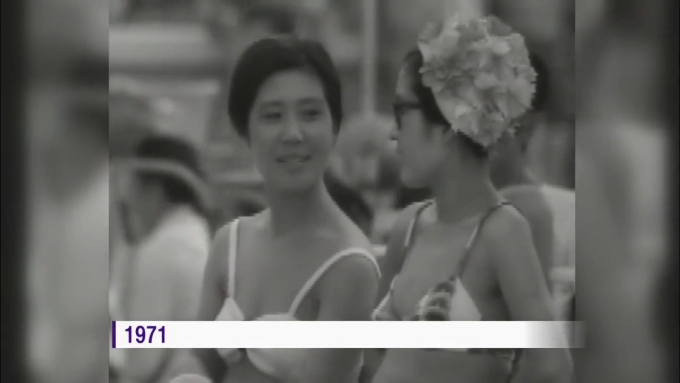
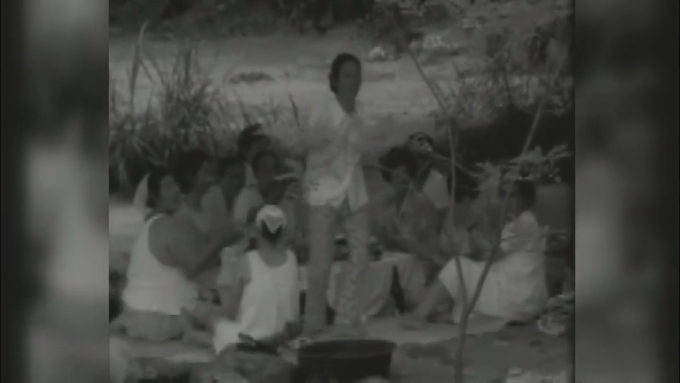
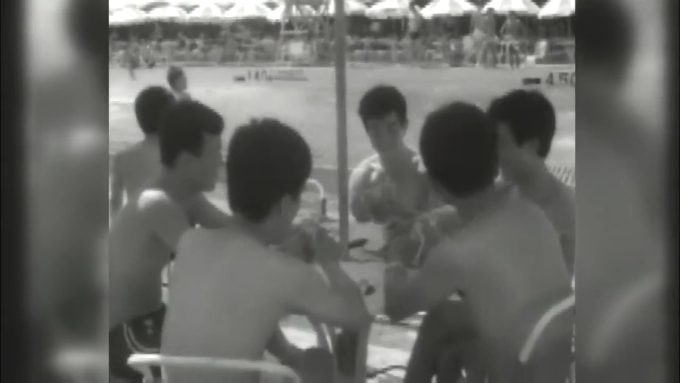 2016 anchor: “In the 1970s the word ‘vacation’ was a buzzword, and many social issues associated with disorder, excessive prices, and overconsumption at vacationing spots occurred.”
2016 anchor: “In the 1970s the word ‘vacation’ was a buzzword, and many social issues associated with disorder, excessive prices, and overconsumption at vacationing spots occurred.”
Look past the black and white, and many scenes from that segment look surprisingly modern. That’s what makes the original anchor’s warning so jarring. Who the hell buys so many beach balls, I wondered, that they get into debt?
In 1971, I’m sure Korean viewers were thinking the exact same thing. So, what on Earth had been the government’s motivation in producing that?
To answer, let’s be clear about what we’re actually discussing first. That Arirang report from August above is a translation of Korean news reports from a few weeks earlier, about 44 various videos, pictures, and documents on the theme of vacations just released by the National Archives of Korea (see here for a full list; opens PDF):
The segment we’re interested in is “To the Extent You Can Afford It” (분수에 맞는 피서를), originally shown on Daehan News (대한늬우스) on 16 August, 1971; see here for the full version, with much better picture quality.
Here’s a transcript:
무더운 여름철 물놀이가 한창입니다. 도심의 백화점이나 시장에서는 필요이상의 피서용구들을 경쟁이나 하듯 사들이는 이가 많은데 이 가운데에는 빚을 내어가면서까지 분에 맞지 않는 놀이를 즐기는 분도 있다고 합니다. 하기야 애써 번 돈을 무더울 때 분에 맞게 쓴다고 해서 탓할바는 못되지만은 그렇다고 지나치게 낭비를 하거나 빚까지 얻어 쓴다는 것은 삼가해야 할 일이 아니겠습니까? 물놀이는 형편과 분수에 맞게 그리고 가족과 함께 즐기는 것이 좋겠습니다. 또 수영장이나 피서지에서는 공중도덕과 질서를 지킵시다. 술에 취해서 큰 소리로 떠들어 대거나 눈에 거슬리는 짓은 삼가해야겠습니다. 우리는 분수에 맞는 피서로써 무리가 없고 명랑한 여름철을 보내야겠습니다.
“This hot summer, people are in the middle of having fun in the water. At city department stores and markets, many people are buying more leisure items than they need, as if they were competing with each other. Among them, some are enjoying themselves beyond their means, even getting into debt. Of course, people can’t be blamed for spending their own money which they earned themselves. Yet even so, isn’t overspending and getting loans something we should refrain from? It’ll be nice to enjoy the holiday with your family to the extent that you can afford. Let’s obey public rules and morals at swimming pools and leisure places. We should avoid speaking loudly while drunk, and behaving inappropriately. We should enjoy a bright summer to the extent we can each afford (end).”
Unfortunately, I’ve been unable to find any more information about the video online. But probably, that’s only because the first thing to take away from it is how normal it was for its time.
That’s partially because under President Park Chung-hee, accusations of personal enrichment could be used as a device to bring down political opponents and errant factory owners; as Mark Clifford explains in Troubled Tiger: Businessmen, Bureaucrats, and Generals in South Korea (1998), when “the system was at its heart corrupt, virtually everyone was vulnerable to punishment.” But primarily it was because, regardless of what one thinks of his means, Park was at heart a developmentalist, who firmly believed in the necessity of short-term sacrifice and capital accumulation for the sake of longer-term goals—and who regularly reminded the public of that in his speeches.
Writing in Measured Excess: Status, Gender, and Consumer Nationalism in South Korea (2000), Laura Nelson stresses how important it is “to recognize how widespread and pervasive the censure of the pursuit of enrichment was” back then. In particular:
“During South Korea’s lean years in Park’s early tenure, quotidian frugality was ideologically transformed into an act of popular patriotism….Park placed the burden of responsibility for the success of national development strategies on the shoulders of individuals in all their daily economic decisions.”
(p. 113; emphasis added)
Nonetheless, in May 1970 the Health and Social Affairs Ministry issued a report arguing that income inequality was creating serious social problems. Yet more troublesome still, according to Joungwon Kim, author of Divided Korea: The Politics of Development, 1945-1972 (1976), was the simultaneous “conspicuous consumption of the new elite, who began building luxurious homes and riding through Seoul in expensive imported Cadillacs and Mercedes Benz.”
This was at a time when Koreans had only one car per 100 households.
 (1973 Washing Machine Advertisement. Source: Advertising Information Center)
(1973 Washing Machine Advertisement. Source: Advertising Information Center)
And I want to offer yet more fruits from my hitting the books, to convey just how dire I learned the domestic economic and international geopolitical situation was for South Korea then, how tenuous the support for the government was, and just how vulnerable it felt politically. Because it’s reasonable to suppose that it only meant such admonitions became ever more fervent and extreme.
We were talking about a warning about buying too many beach balls, after all.
That would require thousands of words though, and probably most readers are already quite familiar with the circumstances leading up to the authoritarian Yushin Constitution of October 1972.
Instead, the promised insight of the title is how to make those feel more real and convincing.
Doing so is especially meaningful to me, because when I first learned about them as a student in the mid-1990s, it was before the Asian Financial Crisis. Tales of hardship in Korean history back then sounded somewhat abstract, or even hyperbole. Even when I learned much later that, in 1973, the Minister of Education praised prostitutes for securing much needed foreign exchange from USFK soldiers, Korea’s poverty failed to really sink in.“Hardship” isn’t what comes to mind when watching that video either, nor with that much–shared image of women’s fashions in 1971 that I opened this post with. Nor with this personal favorite too:
 (“Seoul 서울 1968-08-07 – 68D08-0723”, by Pal Meir; used with permission)
(“Seoul 서울 1968-08-07 – 68D08-0723”, by Pal Meir; used with permission)
I mean, that pink dress, right? And that sweet smile? Could you look her in the eye, and tell her she couldn’t buy a second beach ball?
Ahem. But whatever the reasons such videos and images may or may not do it for you, the temptation to project a familiar, nostalgic Western image of the abundance of the ’60s onto Korea can be quite a powerful one. Perhaps even for Korean readers too, as it may be sufficiently distant that Korean popular culture now glamorizes that era.
That’s probably why it took cold, hard statistics to break the spell for me. Because at the time of that video, which looks so modern, and despite a miraculous-sounding average GDP growth rate of 10% between 1963-1970, still less than 1 in 10 Koreans had washing machines, refrigerators, phones, or televisions:
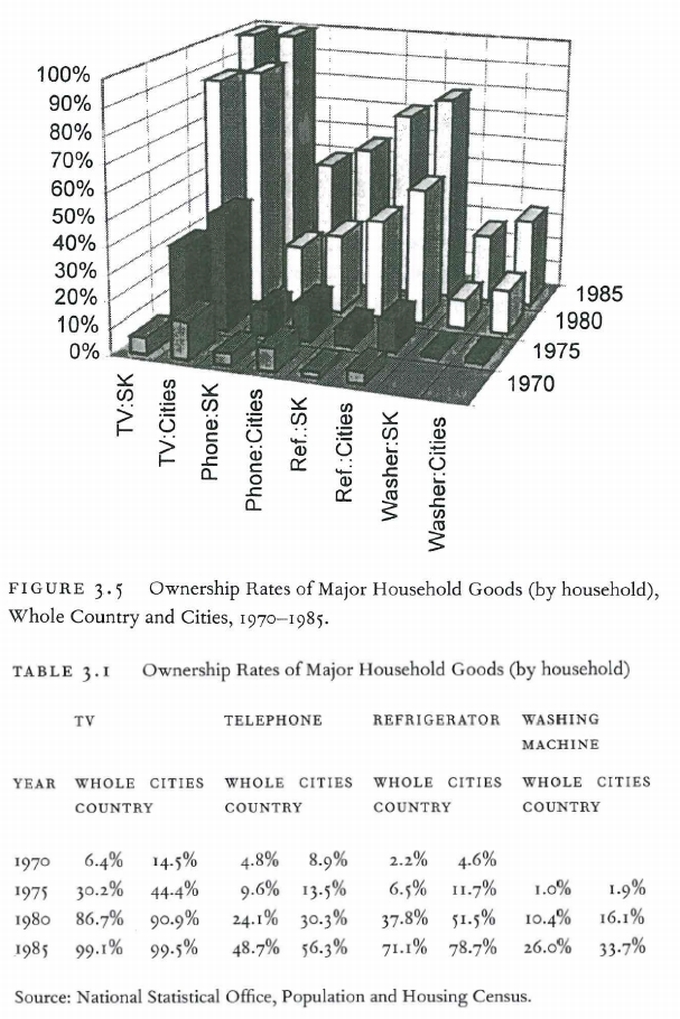 (Measured Excess, pp. 87-88)
(Measured Excess, pp. 87-88)
Those figures are sobering, and beg further questions about to what extent such videos served as both warning and propaganda. Even the women’s bikinis and swimsuits need to be considered in that regard, as again, they seem so modern—certainly no more or less modest than those of today—and may represent genuine permissiveness back then. Or, they may have been a deliberate, photogenic exception in an era when women-only swimming pools were deemed necessary in some places.
But let’s reserve answering those questions for the comments, and/or anything else raised here. Let me conclude instead with another quote from Laura Nelson, as she gives a much better sense than I could of how important the era is for understanding the negative, consumption-based stereotypes of Korean women that would come later. For remember those individuals, whose shoulders “the burden of responsibility for the success of national development strategies” would be placed upon? Ultimately, most of them would prove to be women:
…the image of the housewife as the archetypal consumer…begins to equate women as consumers and women as housewives, and is also part of the process by whereby men’s consumer practices become invisible. Moreover, the kind of consumption that women conduct as “housewives”…is a special case of consumption: women-as-housewives-as-consumers assume a responsibility for a collective interest….The dominance of the image of women-housewives-consumers foregrounds, for women consumers in particular, a moral distinction between responsible consumption and personal indulgence.
This leads to a consideration of the second gendered aspect of consumption: the danger…
(pp. 143-44)
And don’t forget precedents in the 1930s either!
(For more posts in the “Korean Sociological Images” series, see here)

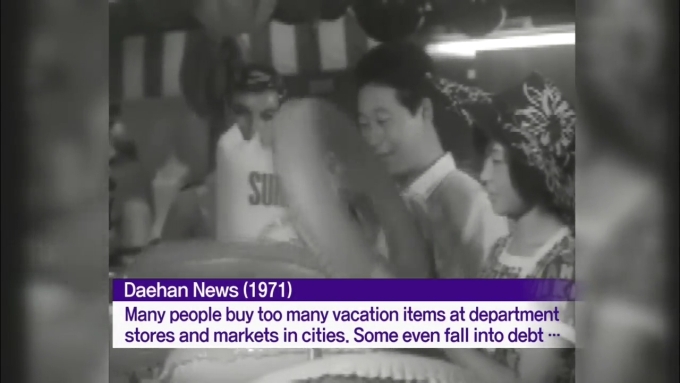
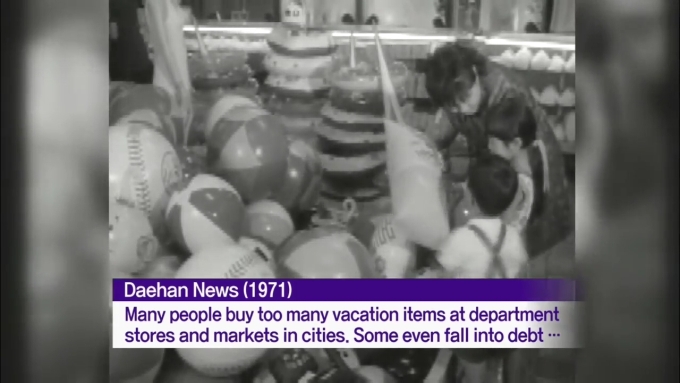
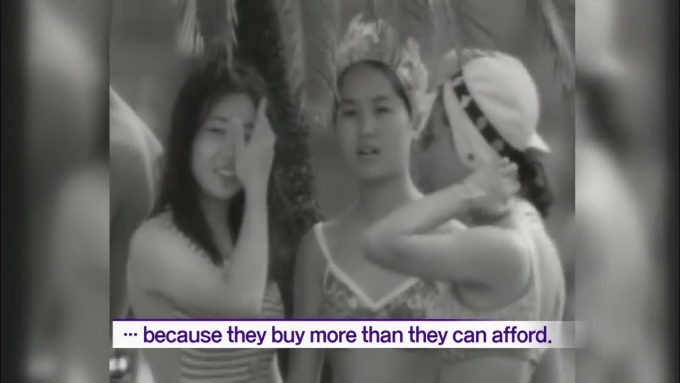

I live in Ho Chi Minh City, one of the fastest growing (economically) cities… it’s fascinating! This afternoon, we just returned from renting a car and driver and going on short trip to the beach and countryside to celebrate new years. My wife (Korean) and friend (Korean) and I were reading your blog, and were completely blown away by how similar these pictures are to the scenes we saw today in Vietnam (even down to the 1 in 100 households having a car, while watching Lamboughinis driving down the bumpy road next to my taxi).
This post gave me much hope for the quickly quickly developing Korea….as well as a desire to get my camera out and document the development! Thank you for your fascinating post!
LikeLike
Thanks in turn, and for the link to your Korean food blog (I fixed the address!), which I’ve just subscribed to.
I can’t really add to your comments about Vietnam sorry (I’ve never been), but I was really surprised to hear that only 1 in 100 Vietnamese households have a car in 2017. (Or roughly 1 in 100 I guess; I don’t mean to take your comment too literally.) I mean, I knew scooters were especially popular in Southeast Asia, and once read that environmental groups and researchers in the region are more focused on emissions standards for scooters than cars for that reason, but that was something like 15-20 years ago. So I really would have expected Vietnam to have more cars by now. Would you say car ownership is unusually low in Vietnam compared to its neighbors? If so, why?
Sorry for all the questions!
LikeLike
Oh the food blog! :) It’s needs quite the updating. It’s been pushed in the background due to new projects, like “kpopcreativity.com” which is just now in progress.
Perhaps the 1 in 100 is a bit exaggerated for 2017, especially since car sales are on the rise. The last data I could find in my quick 10 minute search was 1,000,000 cars in 2006, when the population was approx 83 million, so a ratio of 1:83. Probably the ratio is higher how.
However, it is certainly less than excepted for many reasons. 1) road infrastructure that cannot afford to accept any more cars until billions of dollars are invested in their improvement. 2) taxes and fees on car purchases that range from 80%-200% of the value of the car. 3) most people cannot afford this. 3) Motorbikes are still much faster in the city than cars.
All this may change in the near future as 1) the first 2 subways lines will open relieving stress on the road system, 2) (if) the country continues it’s yearly GDP increase of 6-8% increasing purchasing power, 3) as the tax rates decrease due to several pending trade agreements (although it seems now that as the import tax begins to decrease, the “registration fees” are skyrockting…imagine that!), and 4) as more and more car manufactures more into the Vietnam market producing domestic cars, avoiding the import taxes all together.
I’m also curious about car ownership in Cambodia and Laos and how it compares to Vietnam. I’ll happily nerd out for a bit here due to your questions. :)
LikeLike
Oh, that’s a pity about the food blog; I didn’t notice the dates on the posts, and I’m not a big fan of overly-complicated recipes with many hard-to-find-in-Korea ingredients. So I really like your relatively simple, well-illustrated style.
Anyway, I hate to turn down an opportunity to nerd out sorry, but I’ve about exhausted my knowledge of and questions about cars in Southeast Asia I’m afraid, especially after the answers and extra information you already gave above thanks. Just one thing though: the figure of 1 in 100 in the post is the number of cars per household. The article that’s from also gives the figure of 46,000 registered passenger vehicles then (compared to 20 million in June 2016). So, given that Korea’s population was 32.24 million then, if my math is right (32,240,000 divided by 46,000), that comes to roughly 1 in 701 Koreans owning a car. (Compared to 1 in every 2.5 Koreans in June 2016; 50,800,000 population divided by 20,000,000 cars.)
I have to run out the door to catch a movie as I type this sorry. If necessary, I’ll clear up those stats when I come home!
LikeLike